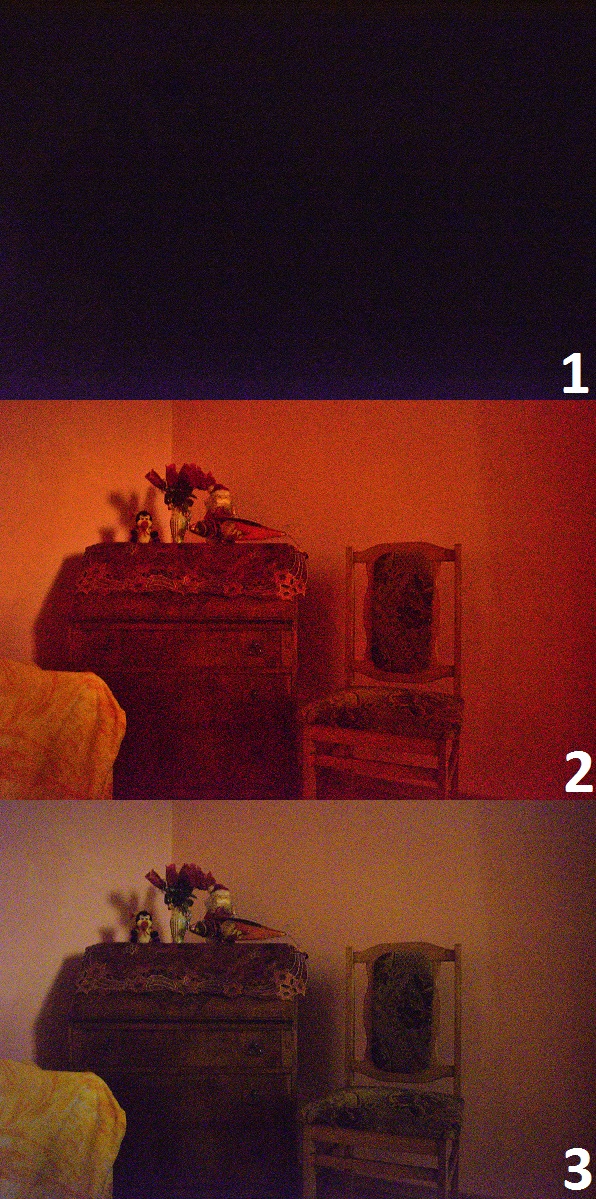How to make your place bright, when is completely dark?
Previously I wrote about night photography in the Nikon D5300, where I mentioned ISO sensitivity, long-time exposure, and exposure compensation.
The Nikon D5300 gives you many options with exposure. Basically, you can take photos with 30sec time exposure, however, the camera is equipped with the Bulb mode, which allows you to make much longer exposures. Have in mind, that this kind of shutter speed is possible when you have control over it. The duration of this exposure depends on the duration of keeping your finger on the shutter-release button. This option can be very useful for completely dark places, where even the smallest light ray can come in. You won’t be able to see this very small light ray or the light dissipation with your naked eye. The Nikon D5300 will do it for you!
I prepared 4 places in my house, where I put the Bulb mode and created very long exposure photos. Usually, it easier is to capture some places in the buildings, where any light is gone at all. When you are outside you always may receive some distant light rays from streetlights, some glows from remote cities, or eventually some spotlights from the stars. The darker place might be your basement, etc.
I created base photos of these places, which started from 3,5,10, and 30s exposure time with medium ISO sensitivity from 1600 to 6400. The basic photos are almost completely dark as you can see below. (Pic.1-4). After the basic photo based on bulb mode and nearly the highest ISO level, I decided to alter those images to a higher level of brightness. Thanks to the exposure compensation I received a quite readable image of the place, which is completely dark. Your eye isn’t capable to see any details at all. You need to wait a couple of minutes until your eye will be able to cover some outlined objects in the dark. Sometimes is nice to receive the image from the place, where you are actually, but unfortunately can’t see it on your own.

Pic. 1 Almost completely dark room 1: 1 – 30s, ISO 12800 0 EV; 2 – 1m05s, ISO 12800, 0 EV; 3 – 1m05s, ISO 12800, +1 EV; 4 – 1m05s, ISO 12800, +2 EV

Pic. 2 Room 2 with light coming from an adjacent room. To receive a clear picture only a small alteration is required: 1 – 30s, ISO 6400, 0 EV; 2 – 30s, ISO 6400, +1,3 EV

Pic. 3 The completely dark room 2 with small light rows coming from a distant streetlight only: 1 – 10s, ISO 1600; 2 – 15s, ISO 3200; 3 – 20s, ISO 5000; 4 – 20s, ISO 12800; 5 – 30s, ISO > 12800; 6 – 30s, ISO 25600; 7 – 1m04s; ISO 25600; 8 – 2m47s, ISO 25600; 9-11 alterations +2 EV and colors.

Pic. 4 Completely dark room 3: 1 – 5s, ISO 6400; 2 – 4m02s, ISO 25600; 3 – 4m02s, ISO 25600 alteration.
To emphasize your dark area details you need to take a long time exposure photo (by bulb mode) with the highest ISO (10000 – 25600) in the RAW format and then go to retouch options in your camera (RAW image processing) and set your exposure compensation from 0 EV to +1,3 – 2EV with high D-light effect. As a result, you will see your place quite bright with many strange lights. However, your image will be very noisy. Remember, that once you do a photo with high ISO, next you are going to enhance every pixel by the exposure compensation you will receive a huge range of brightness. Some pixels will be nearly dark, and others will be almost white. The pixel’s density and colors will indicate the objects, light rays, and dissipation of light in the area, which you have captured.
After those alterations, you can adjust your image properties also and make your image as reliable as possible.

Pic. 5 The darkest place, a staircase. Only a scattered light comes from rooms. 1 – 30s, ISO 6400; 2 – 3m31s, ISO 25600; 3 – 6m46s; ISO 25600; 4-5 alterations.

Pic. 6 The way of the light from a bedside lamp to the staircase in the corridor (Pic. 5).

Pic. 7 Objects covered by the dissipation of light (Pic.6).
Every photo has been taken in Nikkor 18-55mm, 18mm (f/3.5).
Mariusz Krukar
